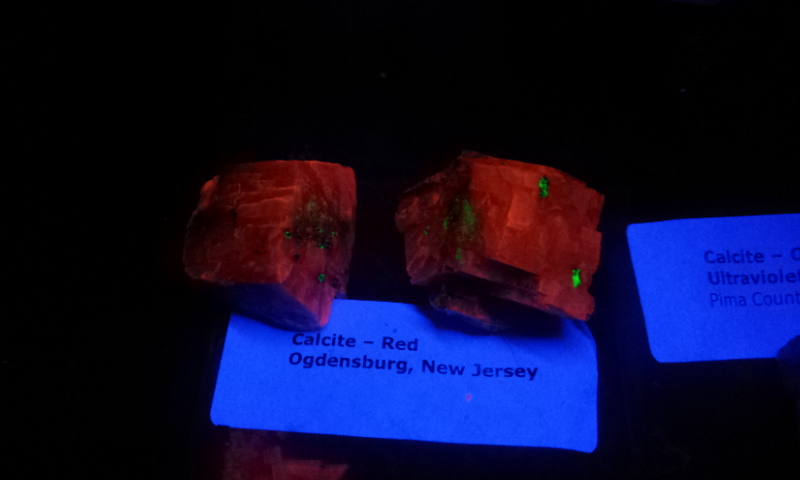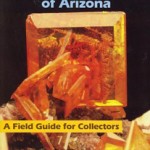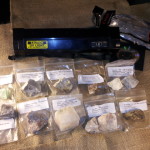
I finally got tired of not having a UV light to use in the field. Years ago I had a nice unit with dual LW/SW and a 12v cigar lighter plug, which worked with lots of portable battery packs and in my car for those nighttime visits to classic UV locations. Sadly, this light was lost and replacing it would be a few hundred dollars.
But, you never know how much you miss something like a good UV light until it is gone. There are just so many things a UV light helps with when checking out minerals. From the visual identification to seeing if a purchased specimen is glued, a good UV light pays for itself, quickly.
I was excited to read about the improvements to UVTools.com handheld Lamp, an all in one unit with a long wave bulb and a strong short wave bulb powered by 6 watts, a decent output, for just under $100. The kit comes with the light, which requires 3D batteries, a sample of minerals to test the light with shortwave and longwave reactive specimens. Safety goggles and a cd rom with study guides and informative literature complete the package, all in all, it gives a great start to any beginner, while the advanced collector will appreciate the power this highly portable hand held unit produces. I found the LW light to be very bright and it made some of the fluorites in my collection to glow bright white/blue. The shortwave light gives a bright reaction, but typically from a distance of no more than 6 inches from the lamp. It will not light up a hillside, or even a whole flat of minerals, but it is perfect for “one on one” specimen viewing.
Below: Photos of the kit, the minerals that came with it and some UV reaction from those specimens.
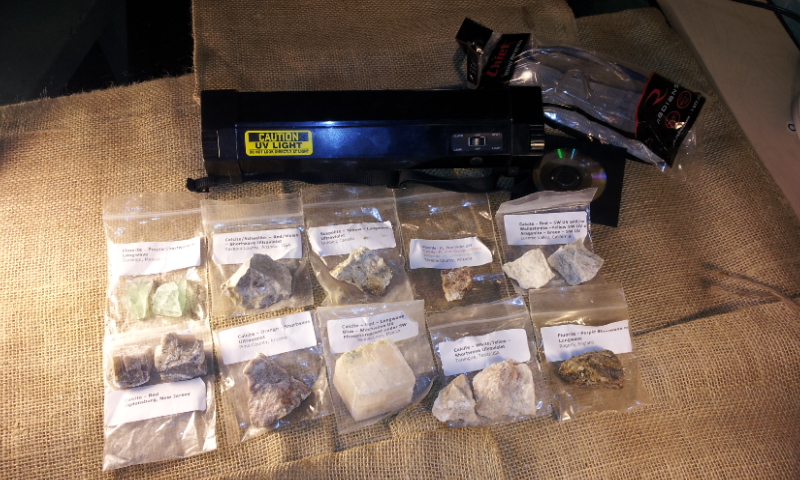
UV Kit, includes the lamp, 10 mineral specimens, safety glasses and a cd full of information. Available from http://UVTools.com
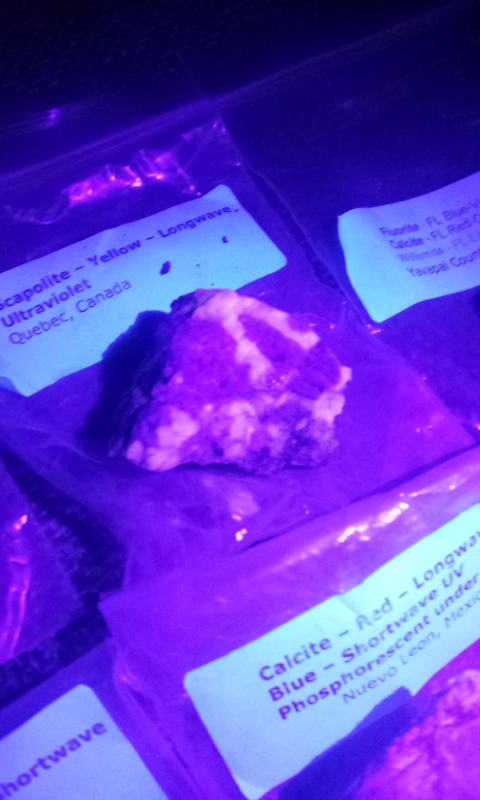
Longwave Light Sample (photo taken with Galaxy S2 Phone)
You can purchase this UV Lamp from the manufacture, directly at http://www.ultraviolet-tools.com for $99.99.
There were two interesting things I learned by using this UV light. This agate deposit near my house became that much more interesting when I found out that every single piece of agate glows bright green under shortwave light. That means there is a lot of uranium in the area, which is giving the agate that color. Then, a hill over from that agate deposit, at another agate deposit, the brown crust on some of the agates was determined to be an uncommon variety of feldspar, after it was found that these crystals, in micron size, were glowing bright pink, typical of the species. You might wonder, so what, crusts of brown on agate? Well, the sweet thing is that these agates would now glow three different colors, green, pink and orange, sometimes yellow, as well. Three color rocks are what it is all about, so being able to notice the brown crusty bits on some of the agates helps identify them for further UV evaluation! It should be no surprise, those glowing agates include the local petrified palm root and what I like to call “Manix Lakebed Agate” which is a slurry of reeds, roots, rods and roughage from the lake that got silicated into a variety of translucent gel agate in shades of clear to black with red inclusions to a thick jasper-like layered wad of organics in stripes of black, red, cream and white. All of these organic masses were ripe with uranium! Several uranium deposits dot the mountains to the south, UV light is a great indicator of “hot rocks”!
At WhereToFindRocks.com we give this product our recommendation for best starter kit for novices and backup/handheld for advanced collectors.
Just under $100.00 from a manufacturer who stands behind their product. http://UVTools.com
